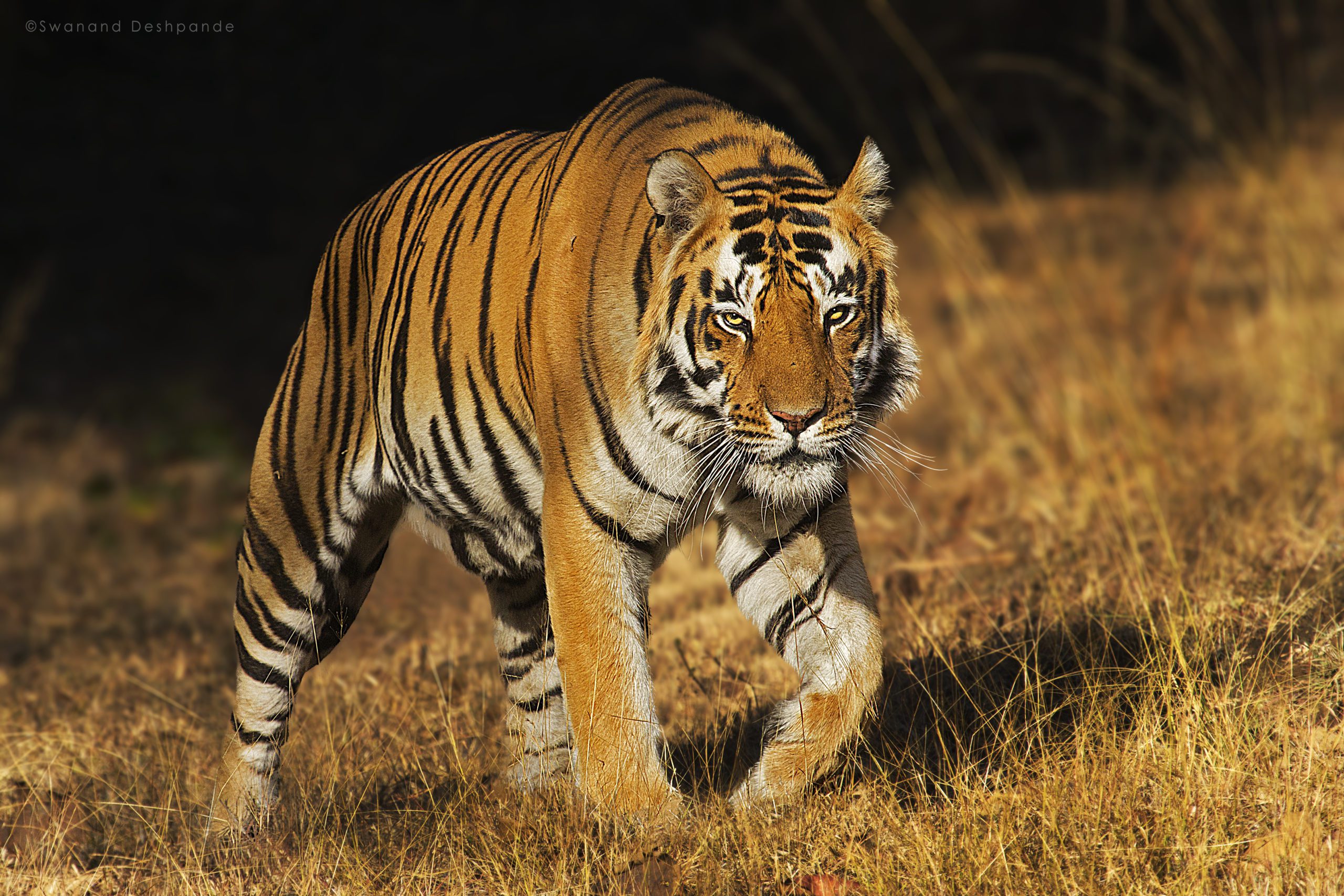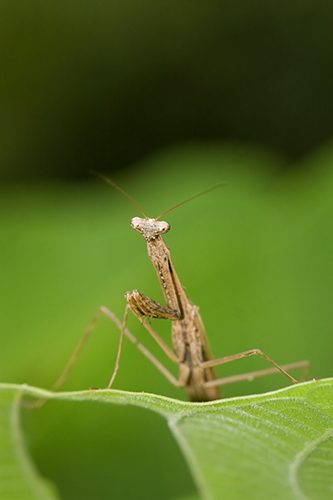Every wildlife hotspots have their own set of animals which are significantly important as a game drive. And when it comes to game drives, the first thing that comes to mind is African game reserves and their Big 5. This concept originated from the African hunting grounds and meant five animals that were difficult to hunt. These were the Big 5:
- African Lion
- African Leopard
- Cape Buffalo
- Rhinoceros
- African Elephant
Similarly us in India we have our Big 5 and also the Big 5 plus one, making them ‘Big Hero 6‘ of Indian Jungles.
- Royal Bengal Tiger
- Indian Leopard
- Indian Gaur
- Greater One Horned Rhinoceros
- Asian Elephant
- Sloth Bear
Before taking you visiting the Big 5 of Central India, we would also like to bring to your attention the existence of healthy rhino (Greater One Horned Rhinoceros) population in North Eastern India. To see rhinos in wild, it is a must to visit places in Assam such as Kaziranga National Park, Manas National Park, Nameri Tiger Reserve and then there is Chitwan in Nepal.
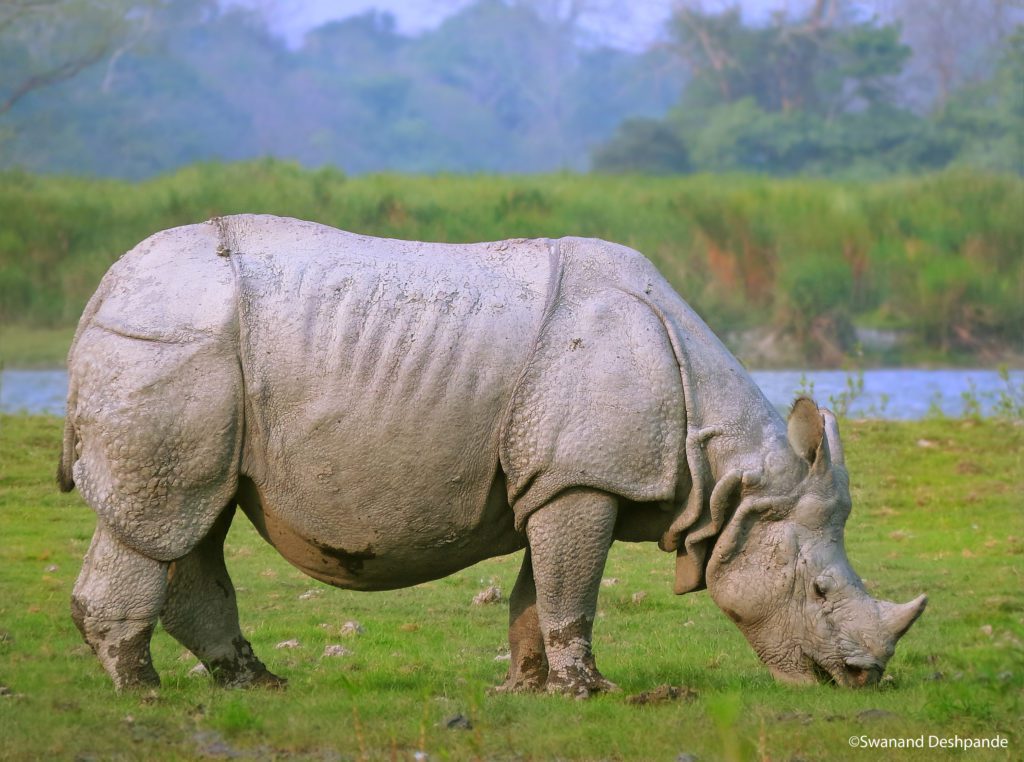
The Big 5 of Central India
ROYAL BENGAL TIGER (Panthera tigris tigris)
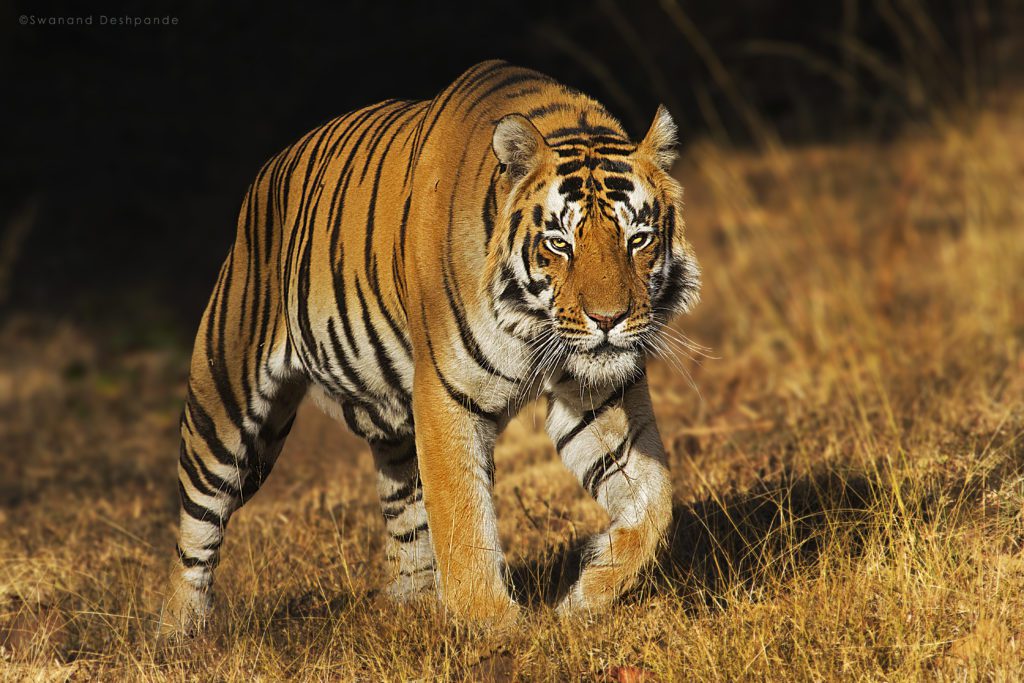
Not just India, but Bangladesh also admires the grace, strength and beauty of the Royal Bengal Tiger by embracing it as their National Animal.
Being the biggest member of feline family, they have powerful and stout bodies that justifies their enormous power. This magnificent cat was built as a hunting machine. With great efficiency, stealth and power, this is the worlds most beautiful killer. They can drag their prey, even heavier than their own body weight, miles away. As tigers ambush to hunt the prey, they prefer flat and low lands which increases their success rate of hunting. Generally solitary animals, they can be seen in a groups when it’s a mother with her cubs or in a pair during courtship and mating time.
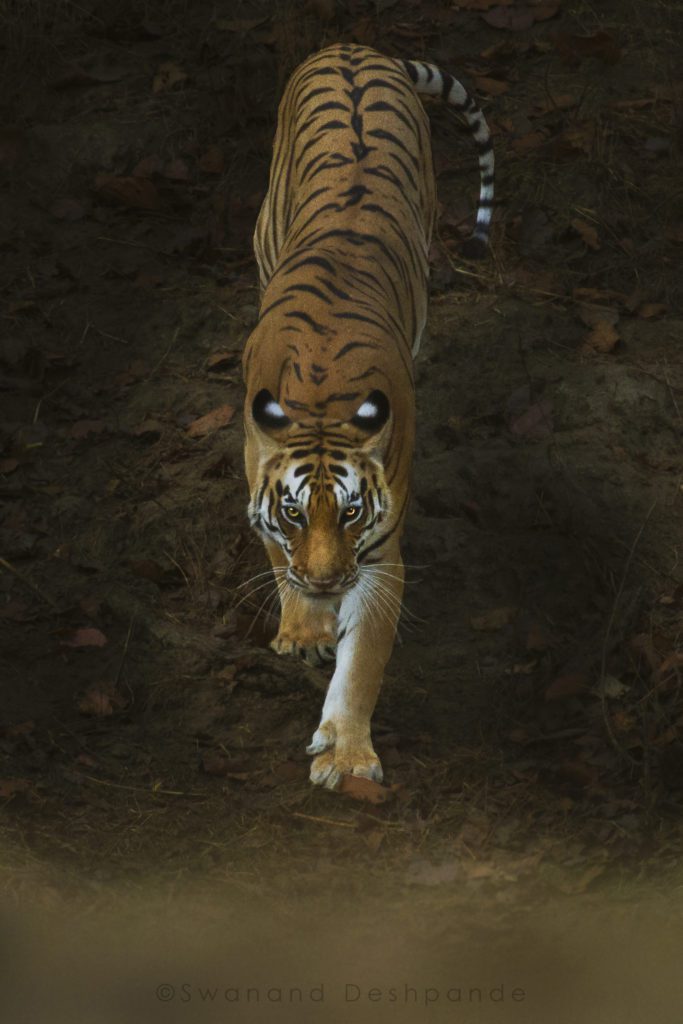
Tigers are highly territorial and will defend it aggressively. Any other tiger from outside the territory that trespasses is challenged and the fights can be fatal. They mark their territory with scent.
Actually, no two tigers look alike, they have different patterns of stripes on the body which are as unique as human fingerprints. The saliva of tigers just like all other mammals, have antiseptic properties which stops the blood flow and heals the wound.
The white spot on the back of each ear of the tiger are called ‘predator spots’ or ‘guiding spots’ for the cubs to follow the mother through the foliage, and they also resemble a pair of eyes behind their head which discourages the attackers to attack from behind.
The tiger’s upper canines are the largest of all the big cats. To conserve this magnificent beast, Government of India launched ‘Project Tiger‘ in 1973 which helped to ensuring a viable population of Royal Bengal Tigers in their natural habitats.
Best places to see Tigers: Bandhavgarh, Kanha, Tadoba, Pench & Ranthambore are considered as the best National Parks for Tiger sightings.
INDIAN LEOPARD (Panthera pardus fusca)
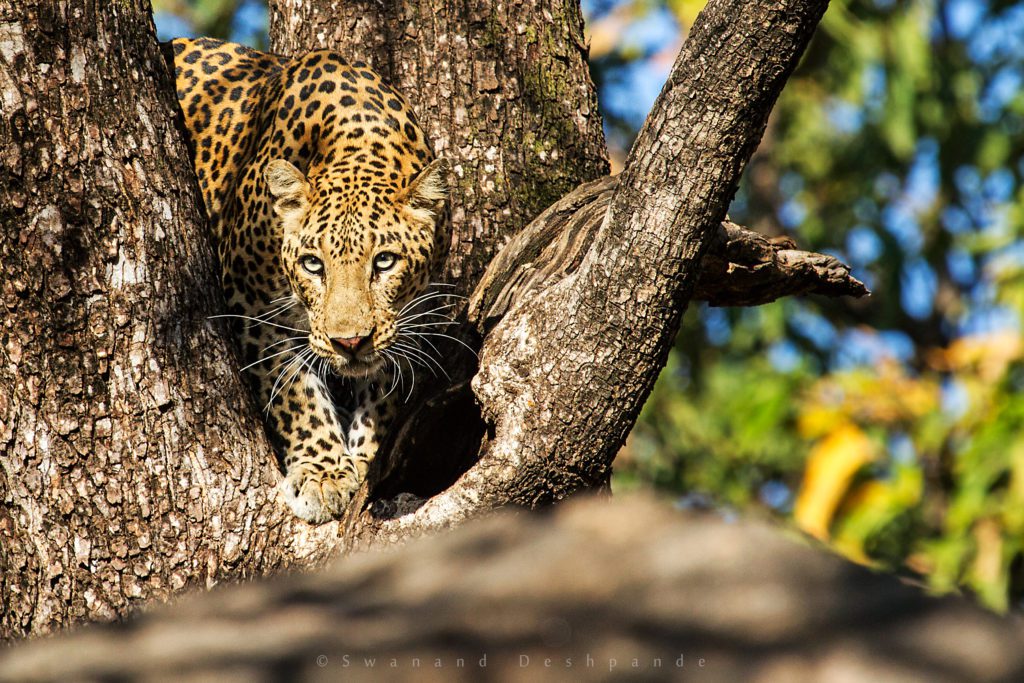
Solitary, elusive and nocturnal feline member, Indian leopard is smaller than other members of the big cat family. With the specialized paws, specially to get a good grip on the tree, they are skilled climbers.
The Leopard is also the most adaptable big cat with regards to climate and region, it has the widest range of habitats in India. Not only they can drag a carcass which is twice of their own body weight, but also can climb the tree with it.
Individual leopards are identified on the basis of patterns of rosettes on their body which is unique to each and these rosettes on Indian leopards are largest when compared to other leopards in the world.
Best places to see Leopards: Tadoba, Pench, Satpura, Panna, Jhalana, Bera, Nagarhole & Bandipur are considered as the best National Parks and wildlife sanctuaries for Leopard sightings.
GAUR (Bos gaurus)
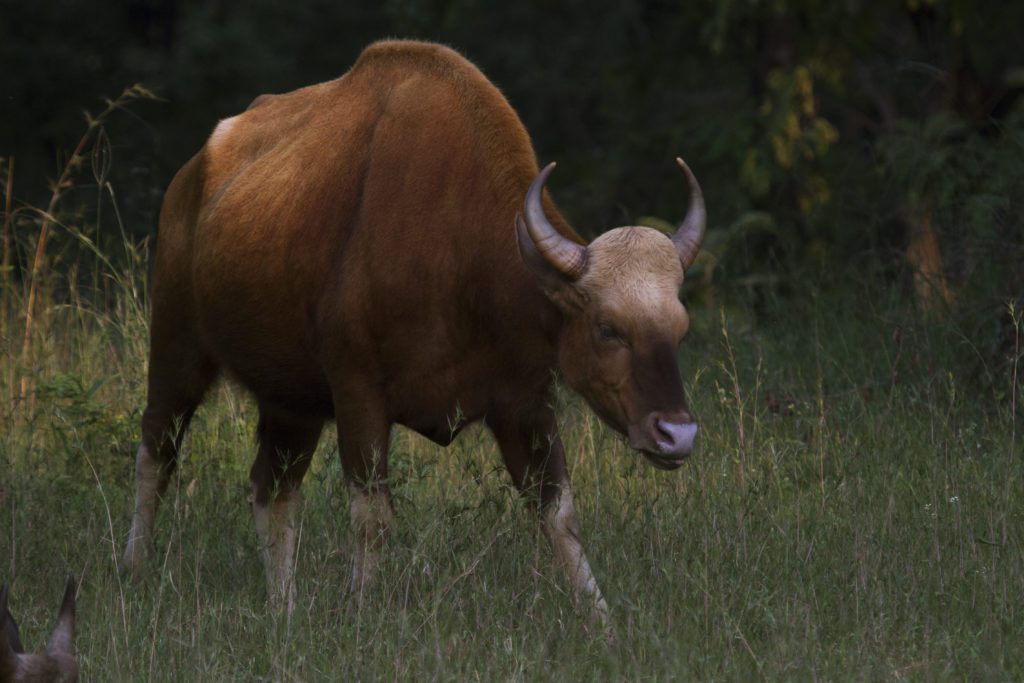
Indian Gaur which is often misnamed for Bison is a native species to India and Nepal and is the state animal of Goa. It is the largest bovine (species of cattle family) having stout body, upwardly turned horns, a massive ridge running across the spine and white ‘stockings’ like colouration on the legs.
Generally, Gaurs are diurnal, but if their habitat is vigorously intervened by humans, they can adapt a nocturnal life.
Gaurs, the social animals, live in herds, having one dominant male and females whilist they predominantly live in matriarchate, which means that the entire group is led by female. While it’s a dry season, they tend to live in smaller groups on lower altitudes and during monsoon, they live in larger groups and move to hilly areas.
Best places to see Gaur: Bandhavgarh, Kanha, Tadoba, Satpura & Pench are considered as the best National Parks for Gaur sightings.
ASIAN ELEPHANT (Elephas maximus)
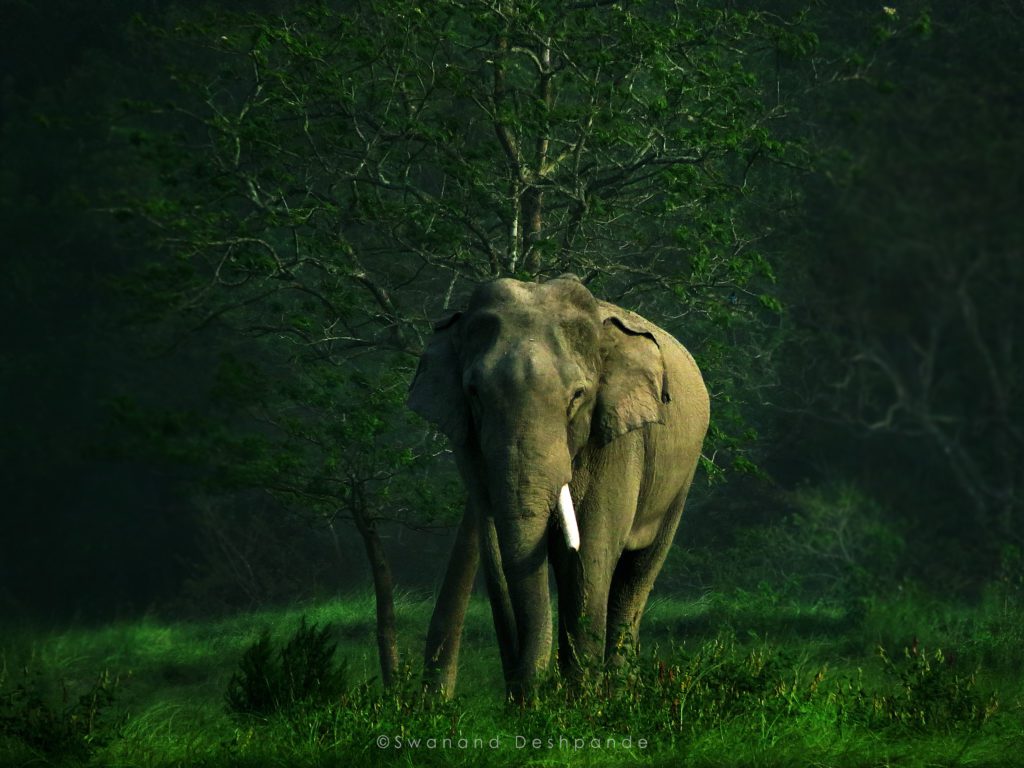
Earlier, Central Indian provence used to serve as a good corridor for elephants but they never resided here. Elephants infamously have specific requirements when it comes to habitat. A forest needs to have ample amount of water, and the forest itself needs to be a moist deciduous or evergreen one.
Two years ago, to everyone’s utter surprise, a herd of elephants from Orissa came to Bandhavgarh and settled in. Today, there are more than 40 individuals in that herd at Bandhavgarh with couple of newborns.
This natural relocation of elephants is a sign that the forests here are flourishing and all damage that was done previously is being undone.
Considering territorial mammals, elephants have largest volume of cortex available for cognitive processing. And the largest brain, thus they signify a wide variety of behaviours related to high intelligence including compassion, grief, mimicry, use of tools, self-awareness and altruism
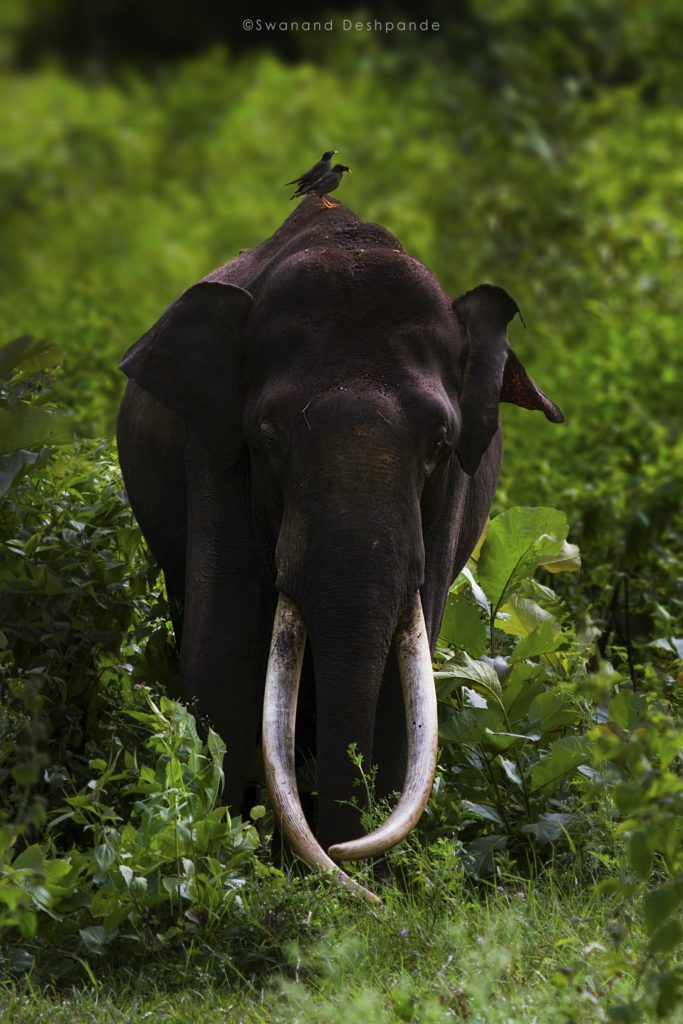
A trunk of an elephant is bascially a long nose which performs many functions like smelling, breathing, trumpeting, drinking, and grabbing things, especially a potential meal.
Even today, Asian elephants are being poached for their tusks, meat and skin. They’re also taken from the wild for the live elephant trade – primarily going to Thailand for the tourism industry which has caused decline in the population of elephants in India along with the habitat destruction and loss of corridors.
In 1992, Project Elephant was launched by the Ministry of Environment and Forests to provide financial and technical support to wildlife management efforts by states for their free-ranging populations of wild Asian Elephants.
Today even though Bandhavgarh is not known to hold large populations of elephants, but our folks at Bandhavgarh embrace the presence of these gentle giants.
Best places to see Asian Elephants: Nagarhole, Bandipur, Mudhumalai, Periyar-Thekadi, Jim Corbett & Kaziranga are some of the many places where a strong population of Elephants reside.
INDIAN SLOTH BEAR (Melursus ursinus)
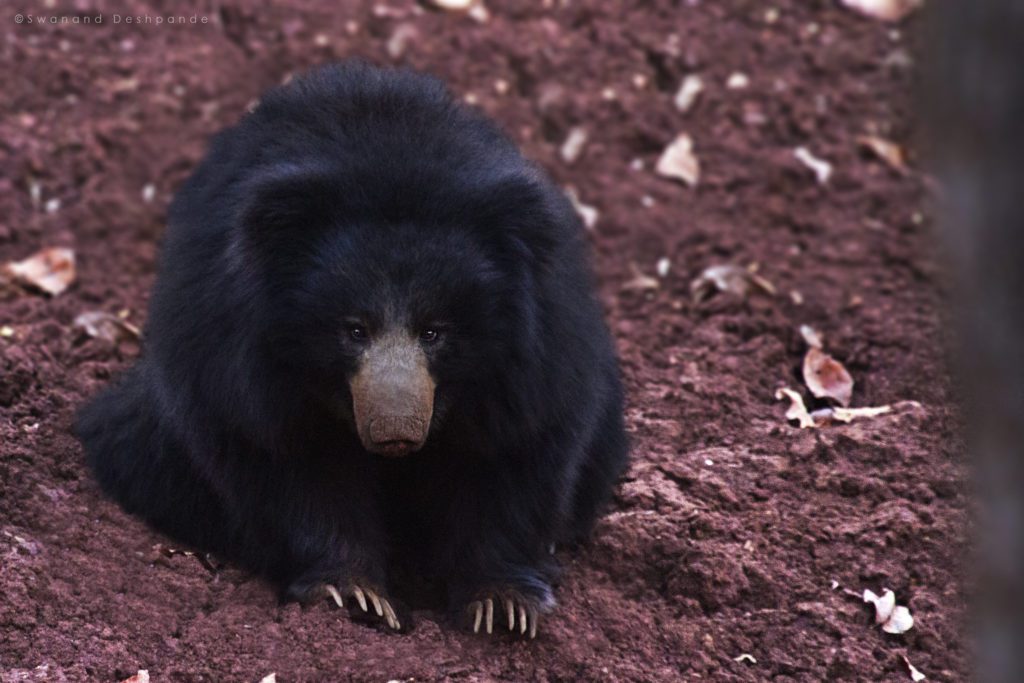
Sloth bear, a nocturnal creature, is also known as ‘Labiated bear’ because of it’s long lower lip and palate . This medium-sized bear is native to Indian subcontinents.
The name is usually misinterpreted as ‘slow hence sloth’. Actually, when its skeleton was first discovered, the structure of the claws resembled ‘American Tree Sloth’ hence the name Sloth bear. Sloth bears are true bears and have a number of unique adaptations to support their primarily insectivorous lifestyle.
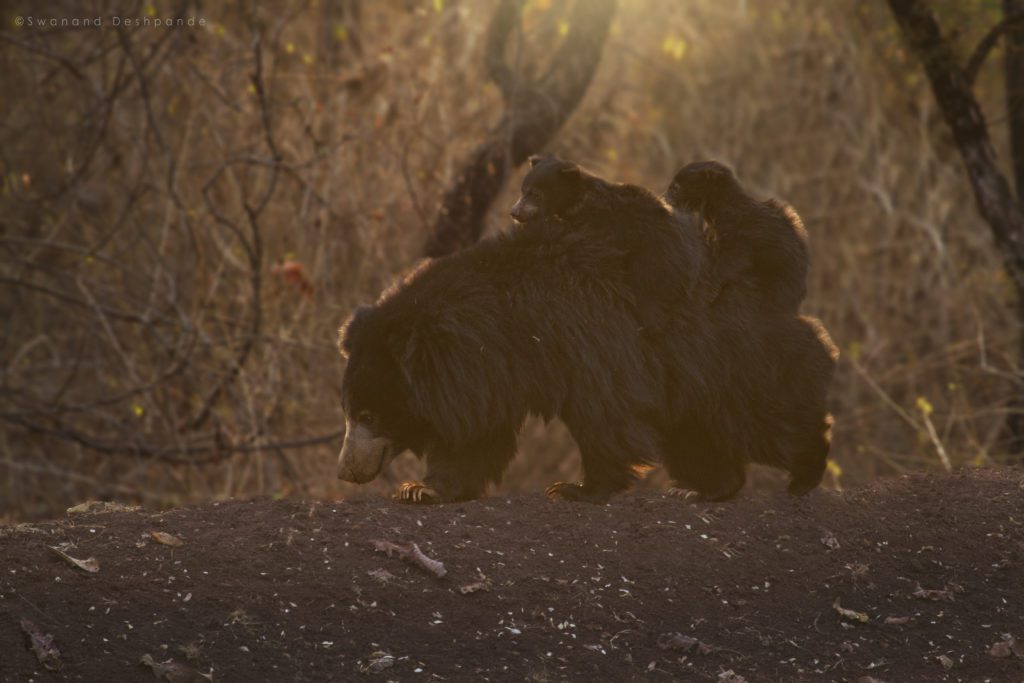
They do not have upper incisors, which allows their long tongue to slip through and suck up insects. This allows them to use their lower incisors to scrape away bark from trees to get at the insects below.
The infants stay in their den until they are about 2 or 3 months old and will have free taxi service/piggybacking on their mother’s back until about 2 years of age!
Sloth bears sleep in caves, but they don’t hibernate (winter sleep) and their habitat being warm and streamy jungles, there’s no need for a long, winter nap.
Best places to see Sloth Bears: Satpura, Tadoba, Daroji, Panna & Hampi are some of the best places to see Sloth bears.
Yes, these wild beauties have hold on the beauty of the parks in Central India and witnessing them in their own country is a must.
Visit our lodges in Central India’s Kanha, Bandhavgarh, Pench, Satpura and Panna to watch the fascinating Big 5 romp in our jungles. Get in touch with our trip curators at Pugdundee Safaris to book your next wildlife holiday.
Our trip curators at Pugdundee Safaris are more than happy to assist you.Phone: +91-011-40132680 Email: [email protected]
Contributed by: Mugdha Desai & Swanand Deshpande.

